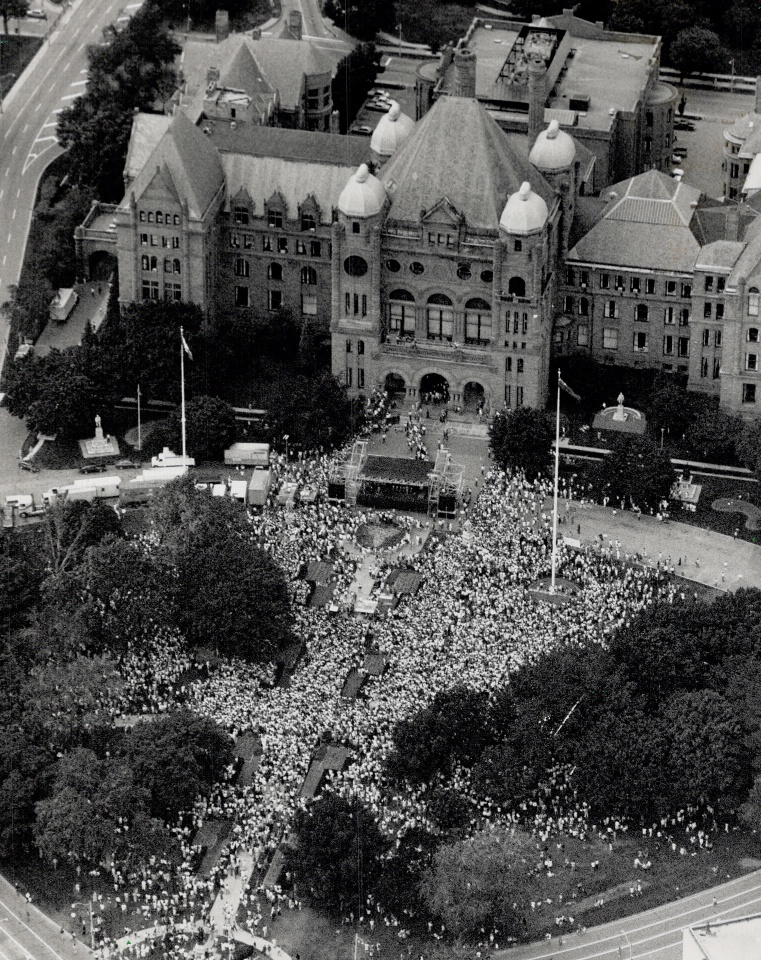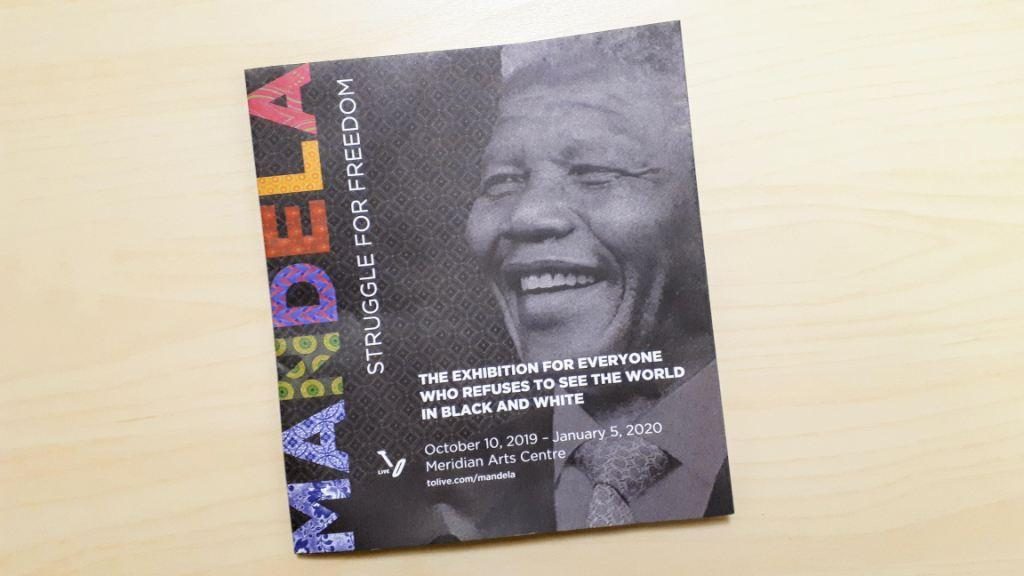I expect I’ll be reflecting on the powerful Mandela exhibition at Meridian Arts Centre Gallery for quite some time.
In Toronto through January 5, 2020, the traveling exhibition is a collaboration between the Canadian Museum for Human Rights in Winnipeg (which I have yet to visit) and the Apartheid Museum in Johannesburg, South Africa (ditto).
Here is a promotional video featuring the excellent Karen Carter, Curatorial Consultant to the exhibition.
This brief blog post in no way does justice to the exhibition, which is a feast for the eyes (those colourful graphics!), the ears, the mind, and the heart. However, for what it’s worth, here are five things I learned.
1. Canada’s Truth and Reconciliation Commission (2008-2015) was inspired by South Africa’s Truth and Reconciliation Commission (December 1995-2002), which was established to uncover the human rights violations committed under apartheid.
2. Nelson Mandela was a lawyer. Of course this makes sense. One of the photos of a young Mandela shows him in 1952 in the law office he ran with his partner Oliver Tambo, providing legal representation for black South Africans who defied apartheid laws.
3. Mandela (1918-2013) was young once. The only images of him I recall are as a white-haired older man, never as a youth. In the exhibition, I saw for the first time photos and videos of Mandela before his 27 years in prison which were very surprising to me. Mandela was a heavy weight boxer! See the third photo from 1939 on the BBC’s Nelson Mandela death: A Life in Pictures.
4. Canada was the first country that Mandela visited after his February 1990 release from prison. (Why? I need to look into that.) Mandela was in Toronto in June 1990 (which was just after I’d graduated from high school and gone off to Colorado to work for the summer).

5. Video and digital media can be extremely effective communications tools, when used creatively, as here. The innovative Mandela exhibition employs video footage in multiple formats, including stand-alone players with headphones, and a set piece featuring Nelson Mandela’s first TV interview in 1961. I was captivated by a floor to ceiling rear projection on two walls of the replica 8×7 foot prison cell. I’ve never seen anything so immersive.
Karen Carter writes in the exhibition’s brochure that she’s heard many personal Mandela stories from many Torontonians. Here’s mine (sorta). In July 2012 I was very lucky to attend an evening of The Elders, a group brought together in 2007 by Nelson Mandela to tackle the world’s problems, in conversation in London. On stage were Bishop Desmond Tutu, US President Jimmy Carter, and Irish President Mary Robinson, interviewed by Jon Snow, and introduced by philanthropist Richard Branson and musician Peter Gabriel. Being in the presence of these accomplished champions of freedom was inspiring as heck (to do exactly what though, I’m not sure yet).
Going through this outstanding exhibition, I realized that I hadn’t really known that much about Nelson Mandela, nor about apartheid, so I’m very pleased to have had this opportunity today to learn more, and right on my doorstep too.
For further details, here is the exhibition’s press release (which is a good excuse for me to try an embedded PDF viewer for the first time).
TO Live Mandela – Updated – Announcement – Final
Meridian Arts Centre Gallery is museum no. 68 in my #100museums challenge (see 100 Museums Challenge).

